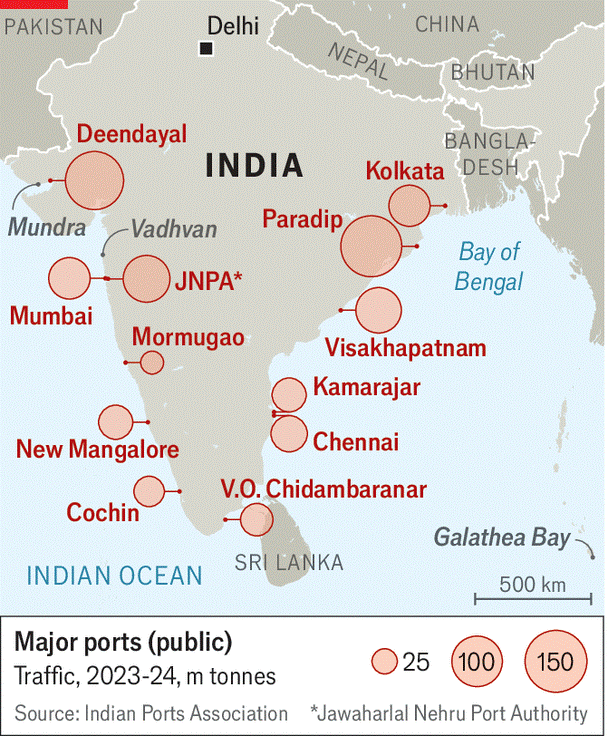Tuticorin International Container Terminal Inauguration: Key Highlights
Why in the news?
The Tuticorin International Container Terminal was inaugurated, marking a major milestone in India’s maritime infrastructure, along with key green energy projects and the launch of the ambitious “Mission 50” campaign.
About Inauguration of Tuticorin International Container Terminal:
- Prime Minister Narendra Modi addressed the inauguration via video, calling the new terminal a “new star of India’s marine infrastructure.”
- The terminal has a deep draft of over 14 metres and a 300-metre berth, enhancing V.O. Chidambaranar Port’s capacity, reducing logistics costs, and saving foreign exchange.
- One of the terminal’s highlights is its 40% female workforce, emphasising women-led development.
Tamil Nadu: A Hub for Maritime Trade:
- Modi highlighted Tamil Nadu’s key role in India’s economic growth with three major ports and seventeen non-major ports.
- The government is investing ₹7,000 crore to develop an Outer Harbour Container Terminal, further boosting port capacity.
- The V.O.C. Port is set to continue expanding its role in India’s maritime development.
India’s Sustainable and Global Growth:
- Modi emphasised India’s focus on sustainable development, with the V.O.C. Port recognized as a Green Hydrogen hub and key player in offshore wind energy.
- India’s growing infrastructure network—roads, highways, waterways—strengthens its position in global trade.
- India is becoming a major stakeholder in the global supply chain, helping drive its journey to becoming the world’s third-largest economy.
Facts about V.O. Chidambaram Pillai Port:
- O. Chidambaranar Port is located in Thoothukudi, Tamil Nadu.
- Named after freedom fighter V.O. Chidambaram Pillai.
- Declared a major port on 11 July 1974.
- It is the second largest port in Tamil Nadu and the fourth largest container terminal in India.
- The port is an artificial port, strategically located near East-West international sea routes.
- Positioned in the Gulf of Mannar, sheltered from storms and cyclones.
- The port operates 24/7 throughout the year.
What is Green Ammonia?
- Green Ammonia: A renewable, carbon-free process to produce ammonia, primarily used in fertilisers.
- Production Process: Uses hydrogen from water electrolysis and nitrogen from air, powered by sustainable electricity, and combines them via the Haber process.
- Energy Storage: Ammonia is easily stored in bulk as a liquid at low pressures or refrigerated, making it ideal for renewable energy storage.
- Zero-Carbon Fuel: Can be used in engines or fuel cells, emitting only water and nitrogen; potential use in maritime engines.
- Fertiliser Industry: Green Ammonia can replace Grey Ammonia without changing existing infrastructure.
Sources Referred:
PIB, The Hindu, Indian Express, Hindustan Times




